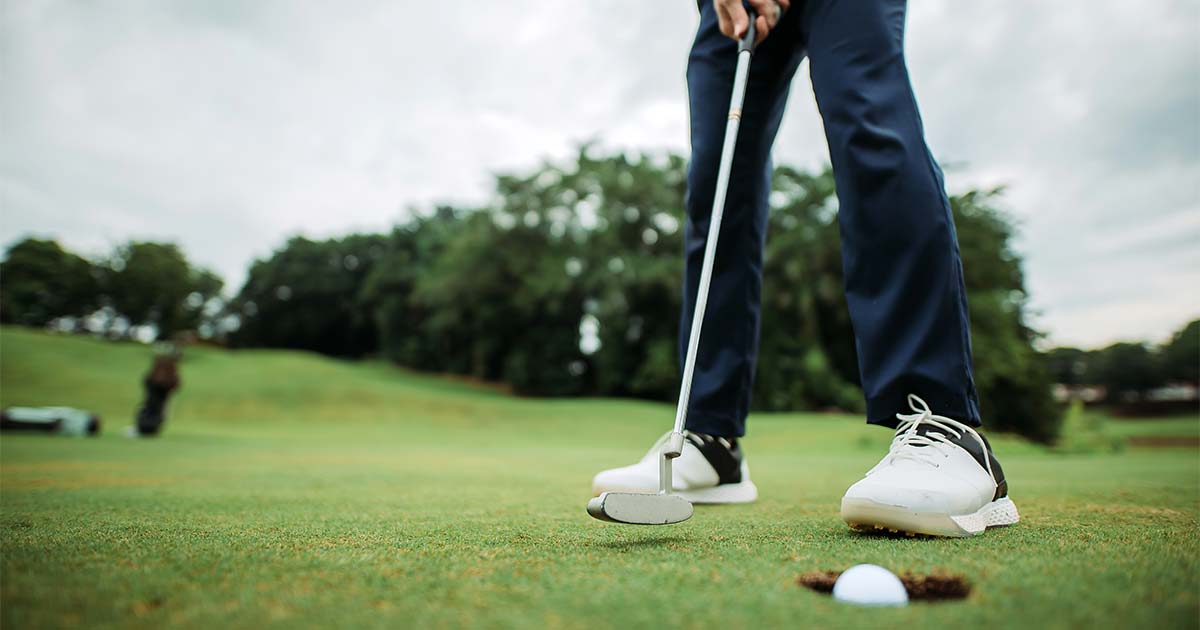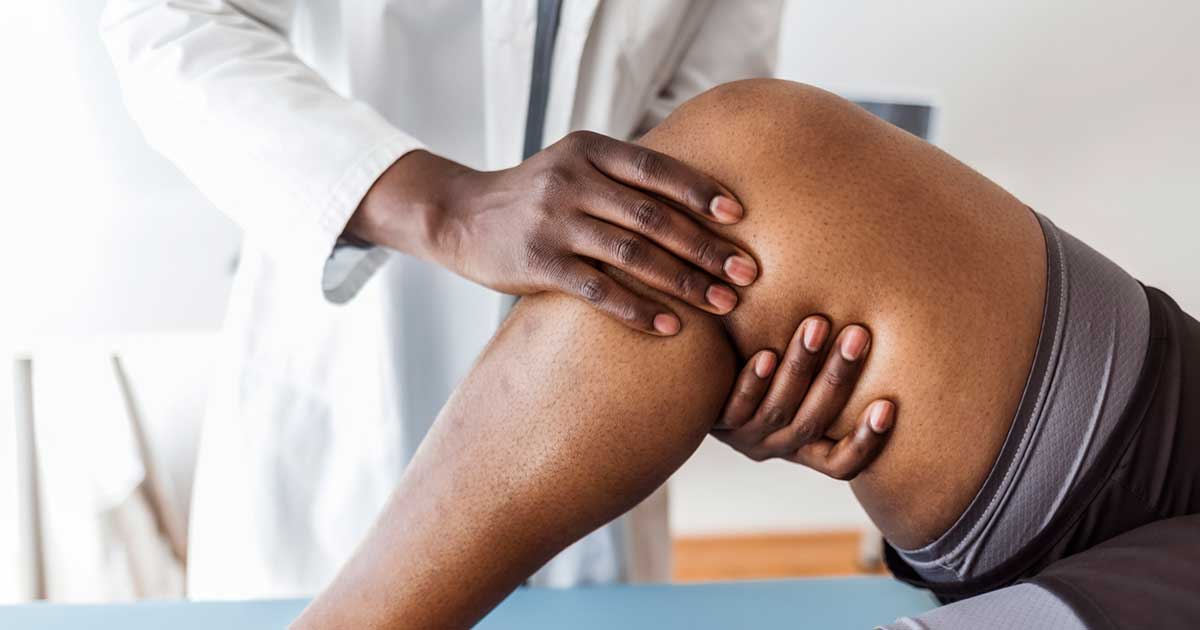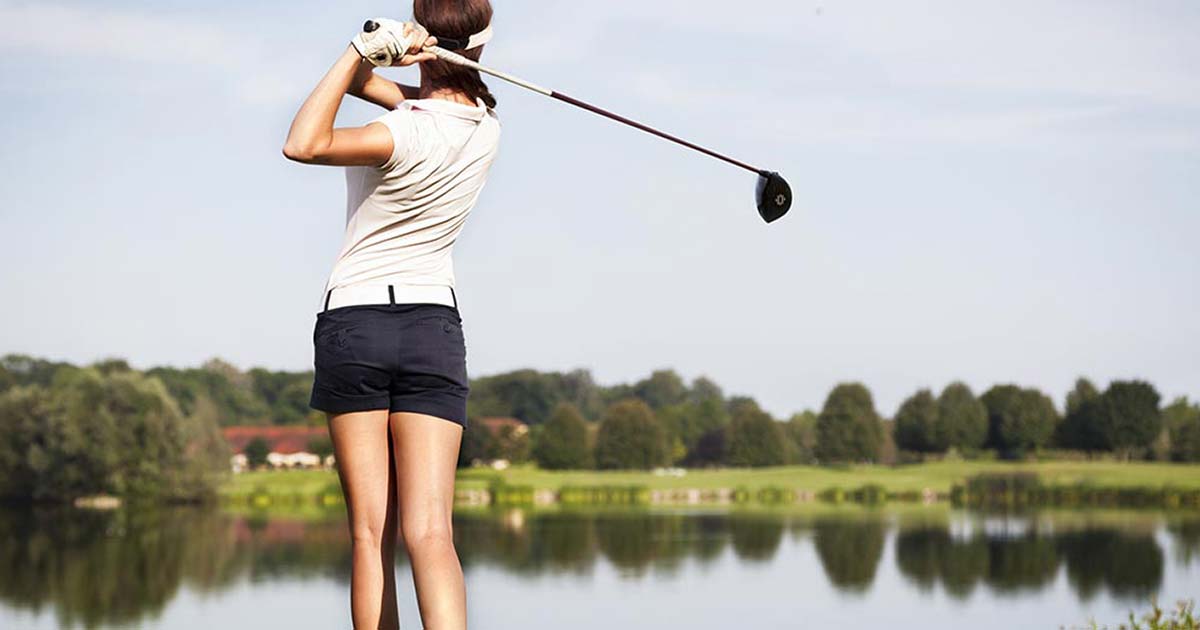What to Know About Golf After Knee or Hip Replacement
Advice to improve your movement, fitness, and overall health from the world's #1 in orthopedics.
Golf is a popular pastime. In 2023, more than 45 million Americans played golf in some capacity, accounting for 1 in 7 households. People of all ages embrace the sport, with many starting young and playing for decades and others taking up the game at later stages of life. The game itself challenges the mind and body—which makes it tricky to navigate returning to play following joint replacement surgery.

“We are regularly asked, ‘When can I resume playing golf?’” says Jack Fitzgerald, PT, DPT, ATC, a physical therapist at HSS Long Island. “It’s a loaded issue with a not-so-concrete answer.” Here, Fitzgerald shares his best advice on getting back on the course after a total knee or total hip replacement surgery.
How Golf Affects the Knees
Your outpatient physical therapy journey following your total knee replacement may take anywhere from two to six months, Fitzgerald says. “Rehabilitation will focus on reducing pain and inflammation, restoring range of motion and building foundational strength to help get you back to a sufficient baseline.” He recommends establishing specific goals with your physical therapist early on to focus on your return to golf, to ensure you’re properly progressing toward your goal.
This prep is crucial, since playing golf can put a lot of pressure on the knee. “During the golf swing, the knee functions as a steady, force-producing mechanism,” Fitzgerald says. “Lacking strength and stability across the knee joint can result in painful flare-ups, excessive strain on your joint, and inefficiencies in your golf swing.” To prevent these issues, focus on swinging through the hip and spine and add some strength training for the muscles around the knee.
And of course, always consult with your surgeon before you return to playing golf. “Establishing a collaborative partnership with your surgeon, physical therapist and a performance specialist can facilitate an ideal return to the course while reducing the potential for setbacks,” Fitzgerald says.
Tips for Returning to Golf after Total Knee Replacement
Fitzgerald suggests taking these steps as you plan to return to the course.
- Get the all-clear. First, be sure you have clearance from your surgeon to begin swinging the clubs again.
- Prepare with your PT. Check with your physical therapist to make sure you have adequate range of motion, strength and stability in both of your legs. Simple tasks like teeing the ball, fixing a ball mark and lining up a putt may be difficult without the proper strength or mobility. Ask your therapist to create exercises that will facilitate these positions.
- Assess your swing. Work with your swing coach, performance specialist or physical therapist to evaluate your swing after your surgery. “This will be the best way to optimize your swing and reduce stress both on your new joint and the rest of your body,” Fitzgerald says.
- Use a cart. Don't go right back to walking the course. Using a cart will eliminate a significant number of steps that can add stress to your knee.
- Walk the equivalent of a full round before you play. Once you do return to walking a full round, make sure you have walked around 10,000 steps (or more) in a time span similar to that of a round of golf (4 to 5 hours). This will test your knee’s ability to withstand the volume prior to getting on the course.
- Try a compression sleeve on your knee. It's a nice way to provide comfort without sacrificing mobility.
- Ease back in at the range. Start with your short irons and work your way long. Taking swings with a lower swing speed will help determine how ready you are to move up to higher swing speeds.
How Golf Affects the Hips
Similar to the recovery timeline of a total knee replacement, Fitzgerald says, a total hip replacement requires two to six months in outpatient physical therapy. “For a golfer, the primary goals of rehab are to minimize pain, regain hip range of motion, and start activating key hip-supporting muscles,” he says. “Functional strengthening will eventually be the focus of your rehab in order to help you reach your goal of getting back into golf.”
After a total hip replacement, “the healing period may initially be shorter than that of a knee replacement since the hip distributes less stress than the knee during everyday activities,” Fitzgerald adds. “That does not, however, always equate to a quicker return to the course.”
Because the golf swing relies heavily on hip rotation to generate force, a calculated return to playing is necessary. Early, undue stress on the gluteal muscles can result in pain, inflammation and changes to the way you move and ultimately delay your return, Fitzgerald says.
Slowly working your way back to golfing can start at the driving range. “Keep track of the amount of swings you take as well as the type of swings—wedges, short irons, driver,” Fitzgerald says. “This will help in minimizing the risk of too much too soon.”
You should also develop an exercise program that mixes aerobic activity, mobility and strengthening exercises to promote the longevity of your new hip. Ask your physical therapist or performance specialist to create a golf-specific routine to use before a day of golf.
Here as well, always consult with your surgeon regarding your return to golfing.
Tips for Golf After Total Hip Replacement
Once you have clearance from your surgeon to get back on the course, here’s how to approach your return to play, according to Fitzgerald.
- Evaluate your range of motion. Check with your physical therapist that you have adequate range of motion at the hips before returning to golf. Internal and external rotation in both hips plays a significant role in creating an efficient golf swing.
- Get a strength check. Have your physical therapist evaluate the strength of your hips, specifically your gluteal muscles. Inadequate hip stability can result in inefficiencies that can negatively impact your swing.
- Assess your swing. Ask your physical therapist if they can perform a screen at the ankles, thoracic (lower) spine and shoulders to optimize your swing. “Utilizing available range of motion at joints surrounding the hip can minimize the amount of stress on your hip,” he adds.
- Ease back in at the range. Start with your short irons and work your way long. Taking swings with lower swing speed will help determine how ready you are to move up to higher swing speeds.
- Start with a cart. The same tips for walking as with knee replacement apply here, too: Use a cart to start, and before you start walking again, make sure you have walked around 10,000 steps (or more) in a time span similar to that of a round of golf (4 to 5 hours).
No matter which type of surgery you had, before your round, a warm-up routine consisting of core and hip mobility, lower body stretching, and hip/core stability exercises can prepare your body. After the round, ice is always a great option to minimize pain or soreness.
And be mindful of how much you play and how many swings you take so you can progress back to 100 percent. Too much, too soon can result in bouts of soreness, pain and inflammation.


